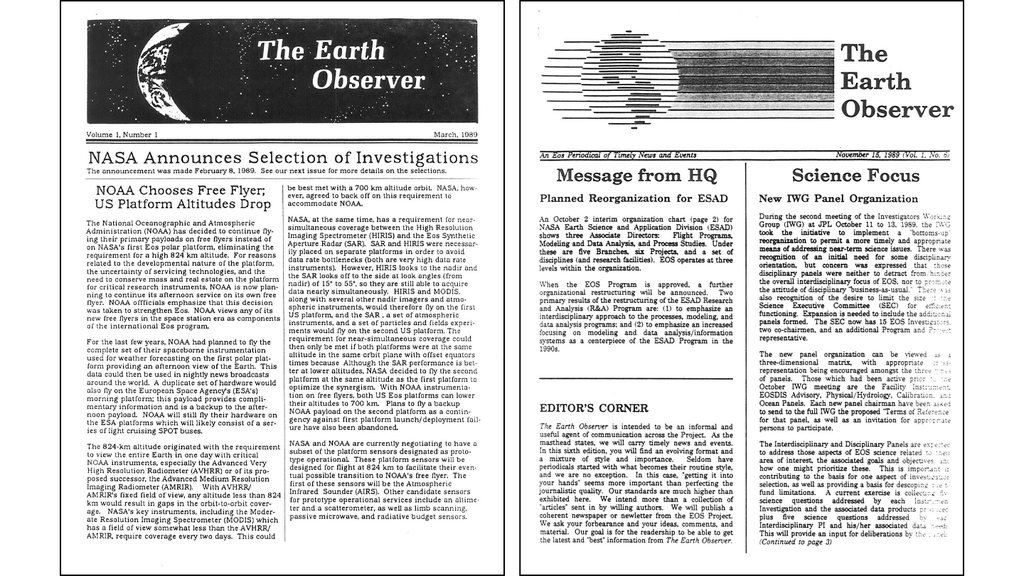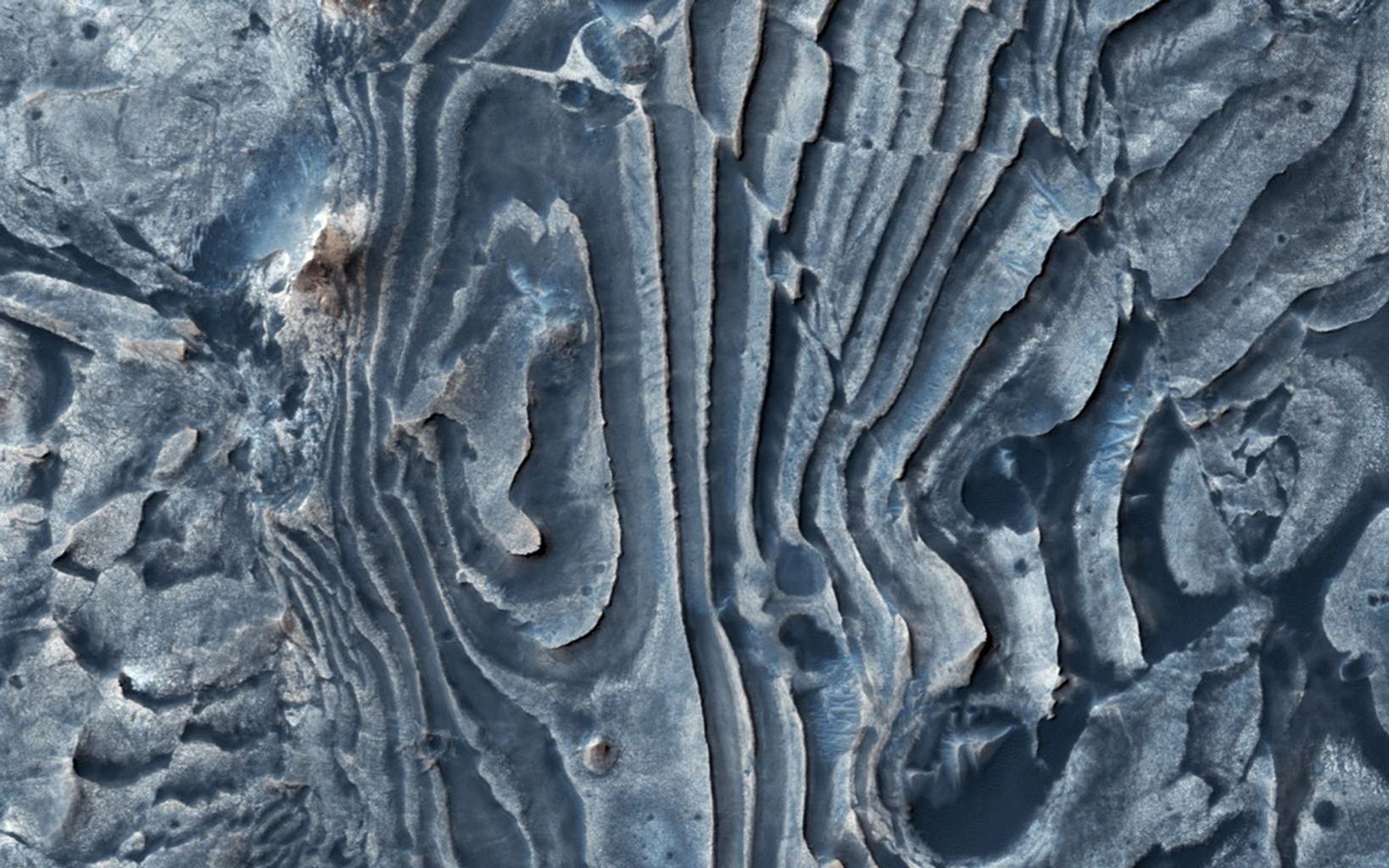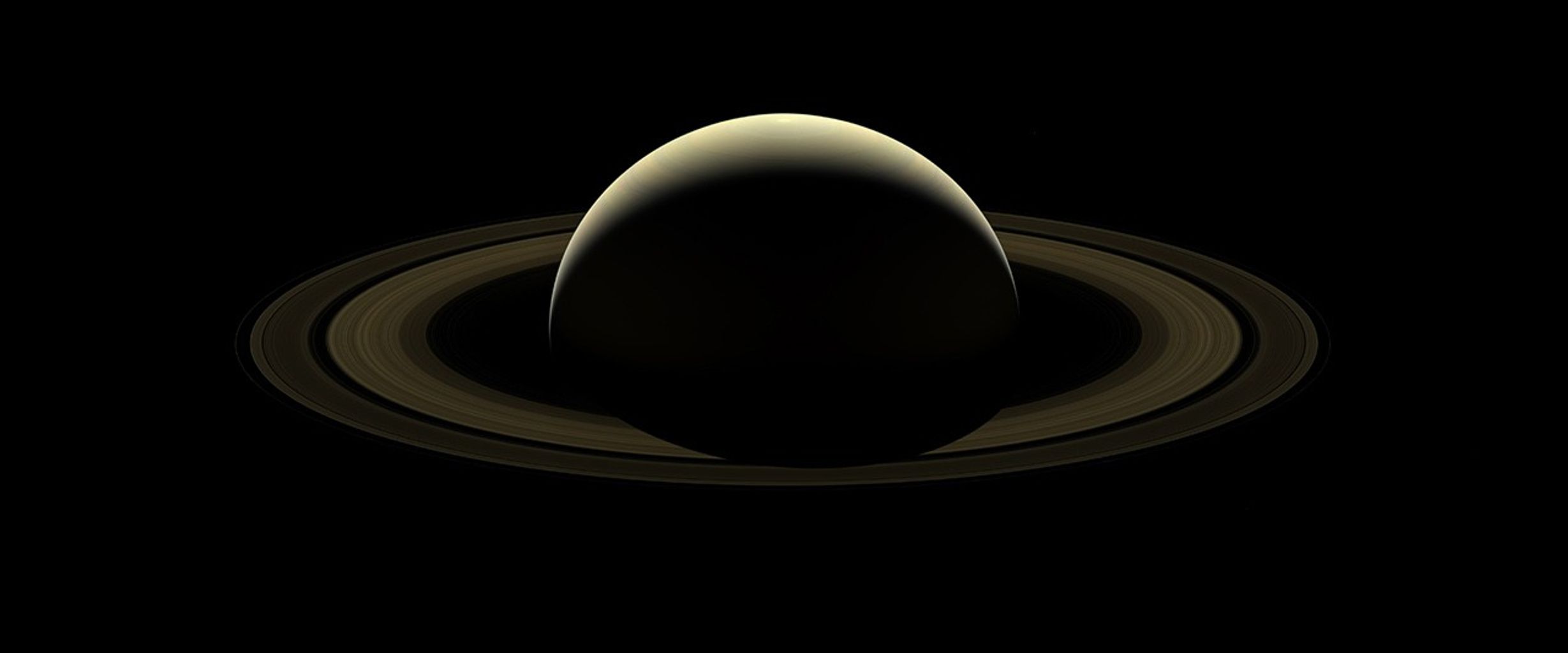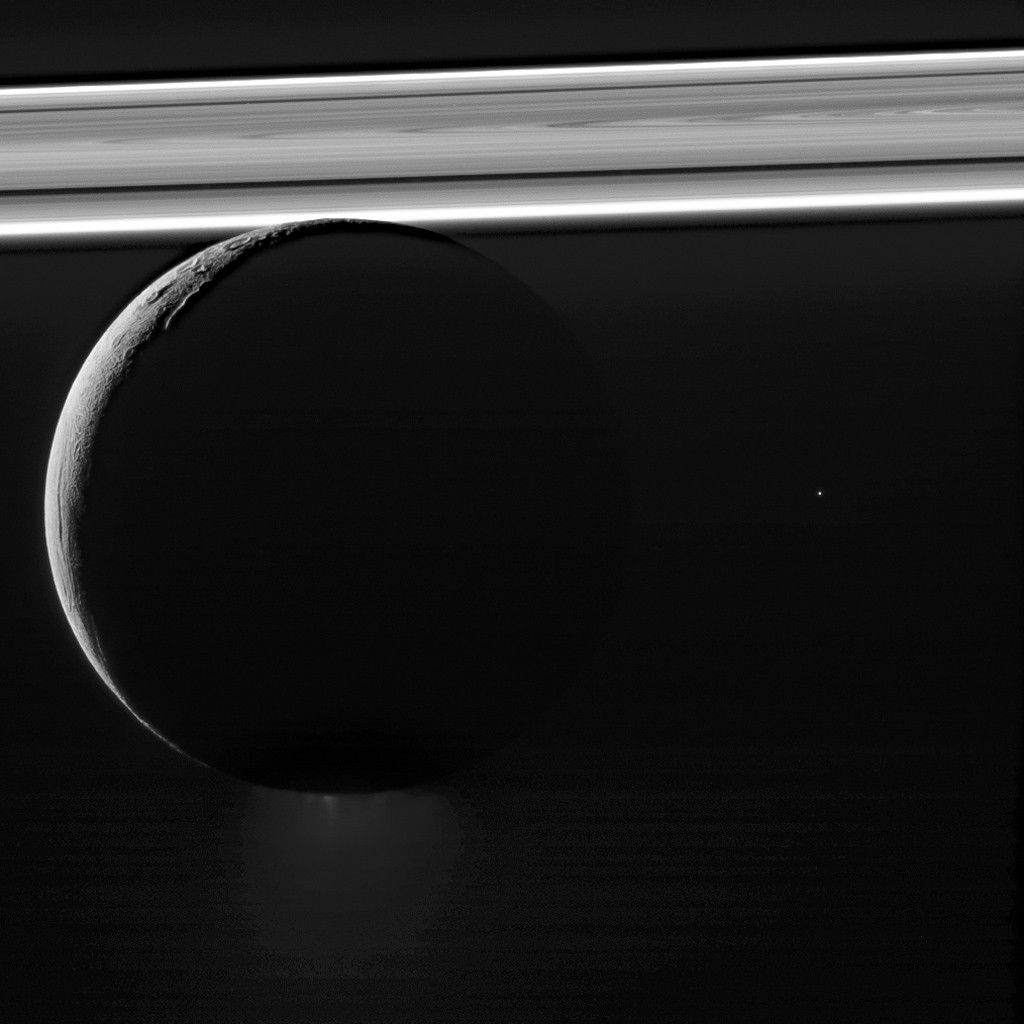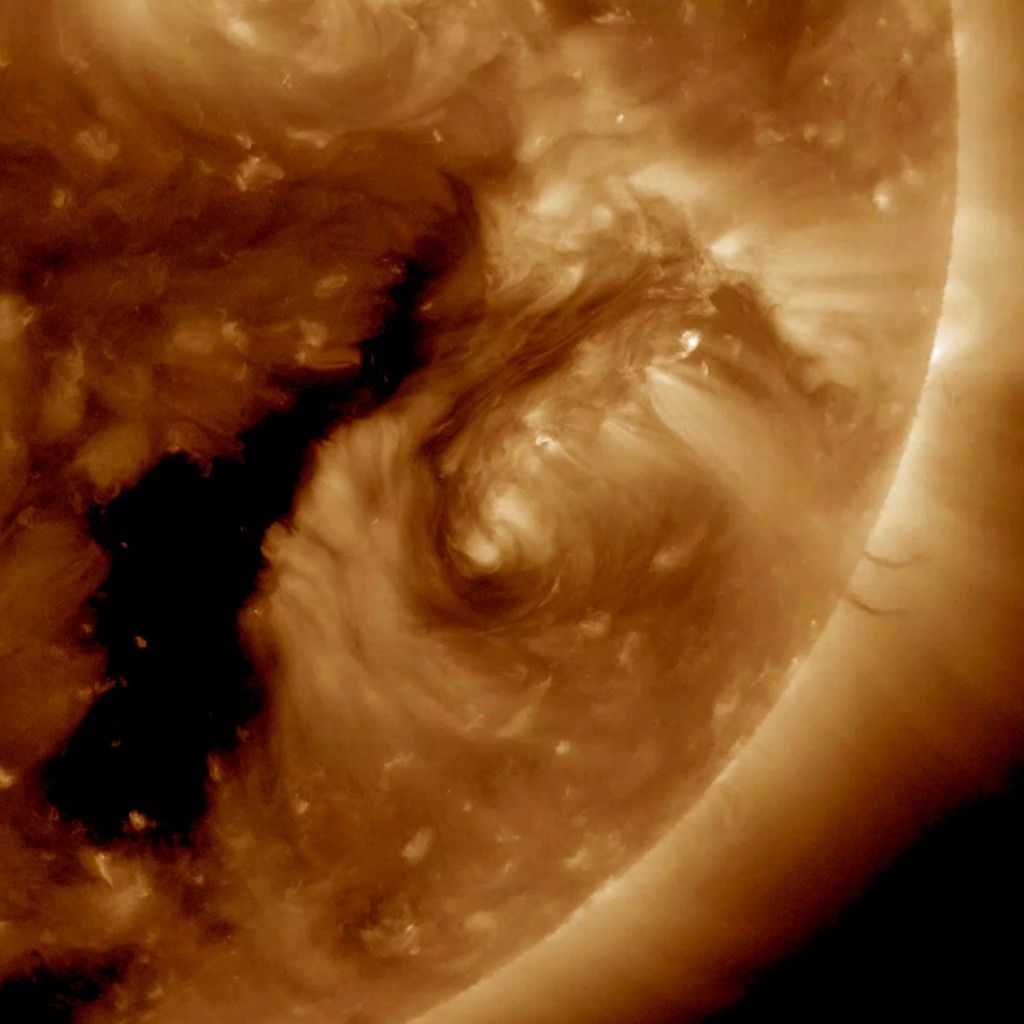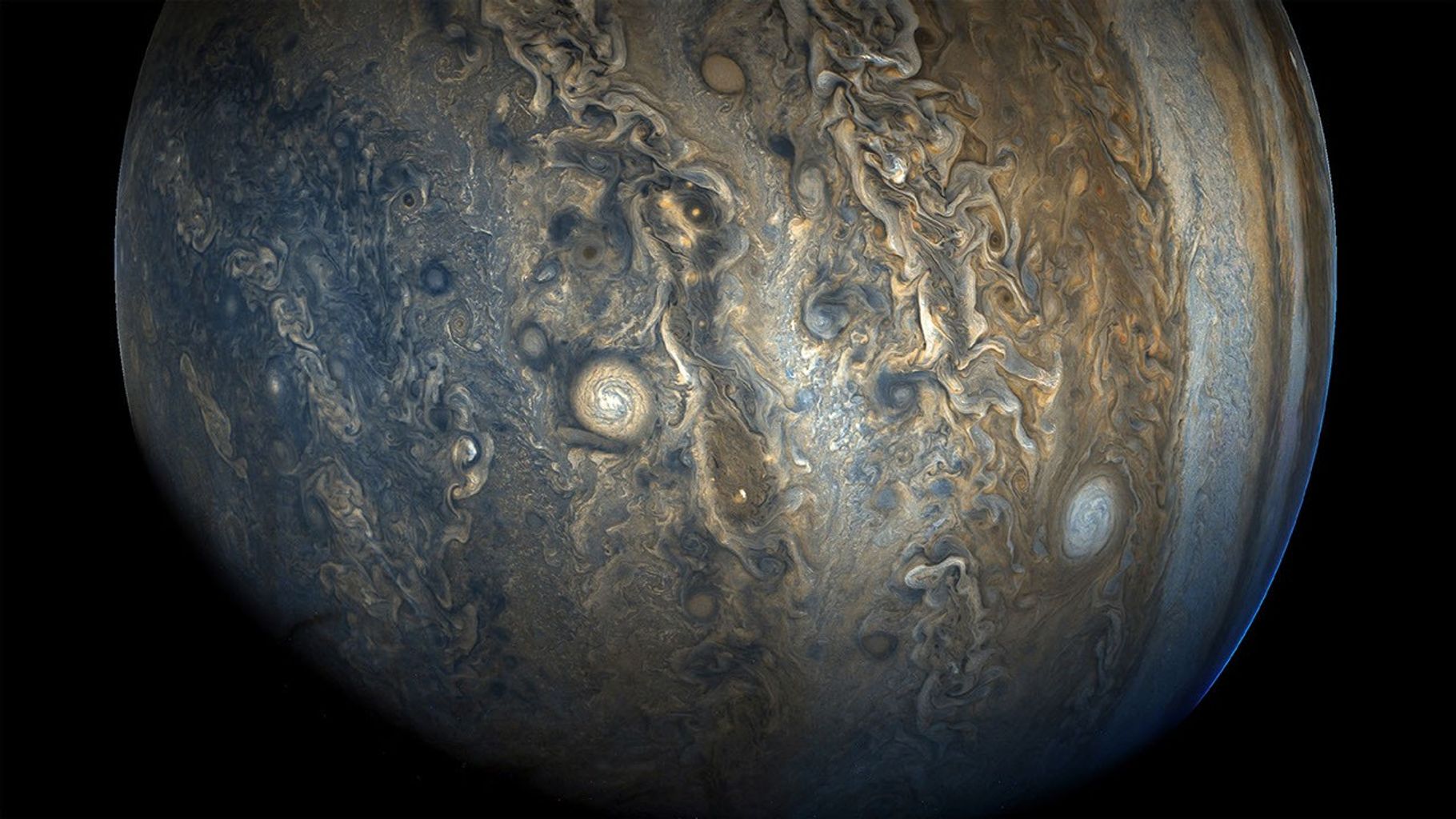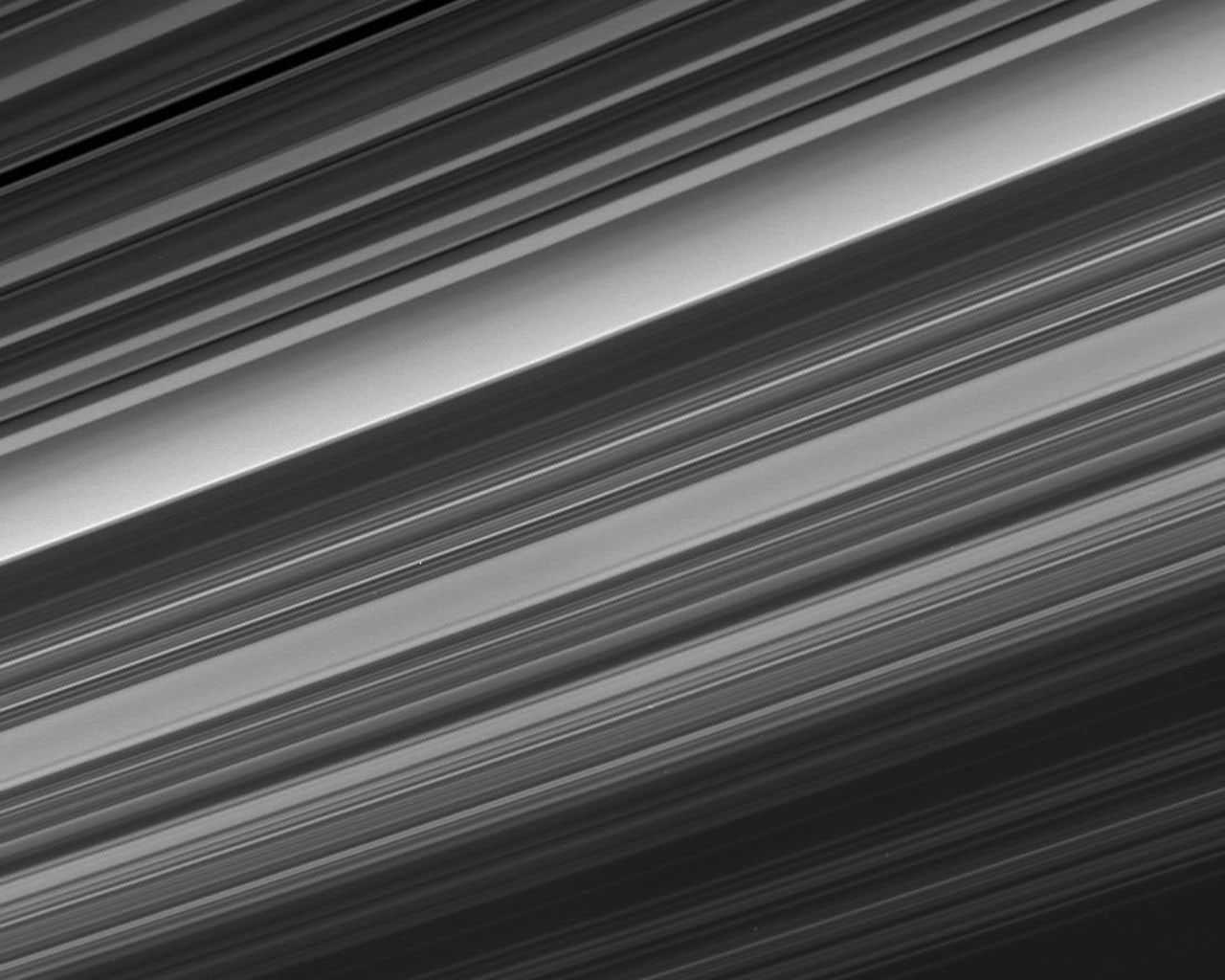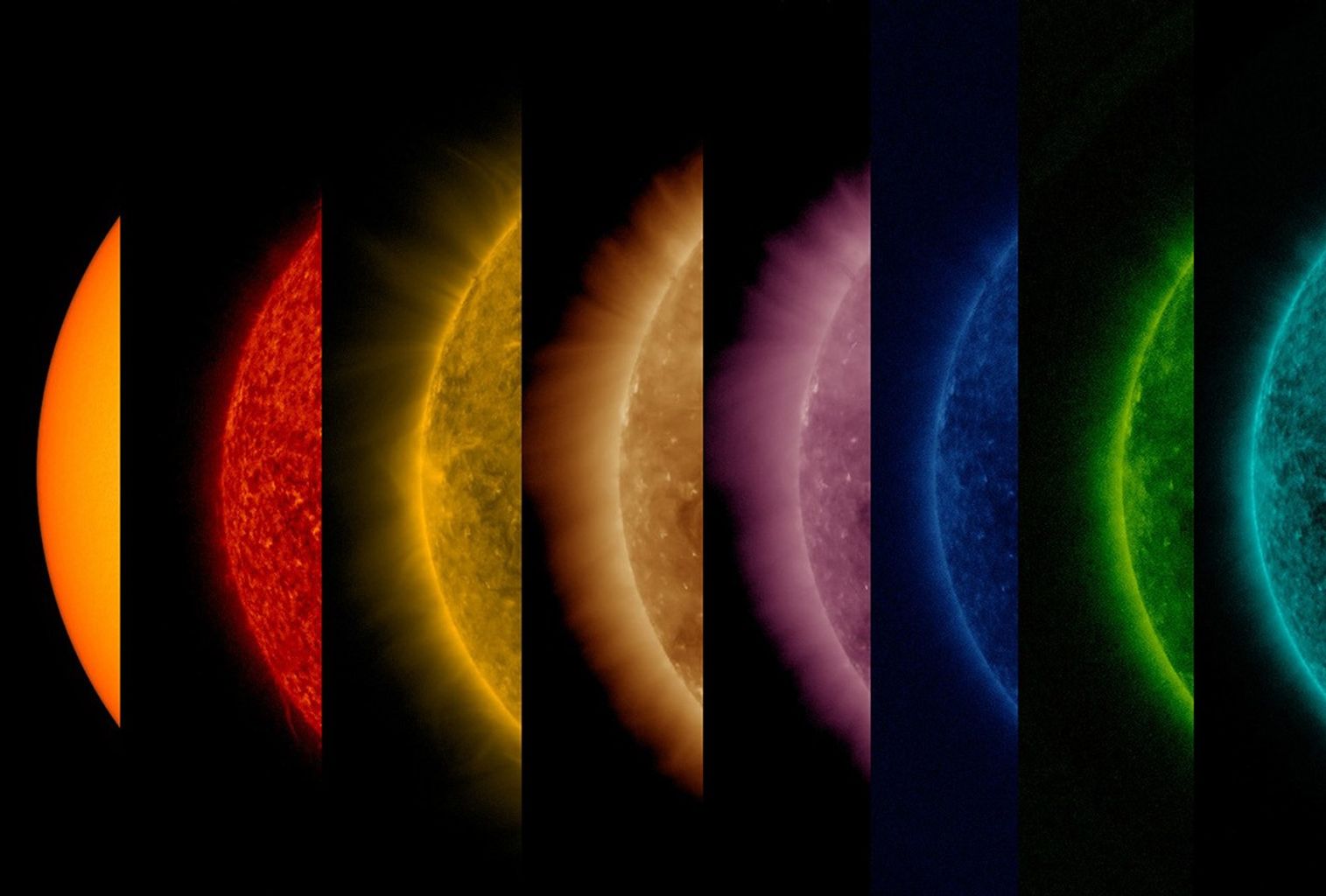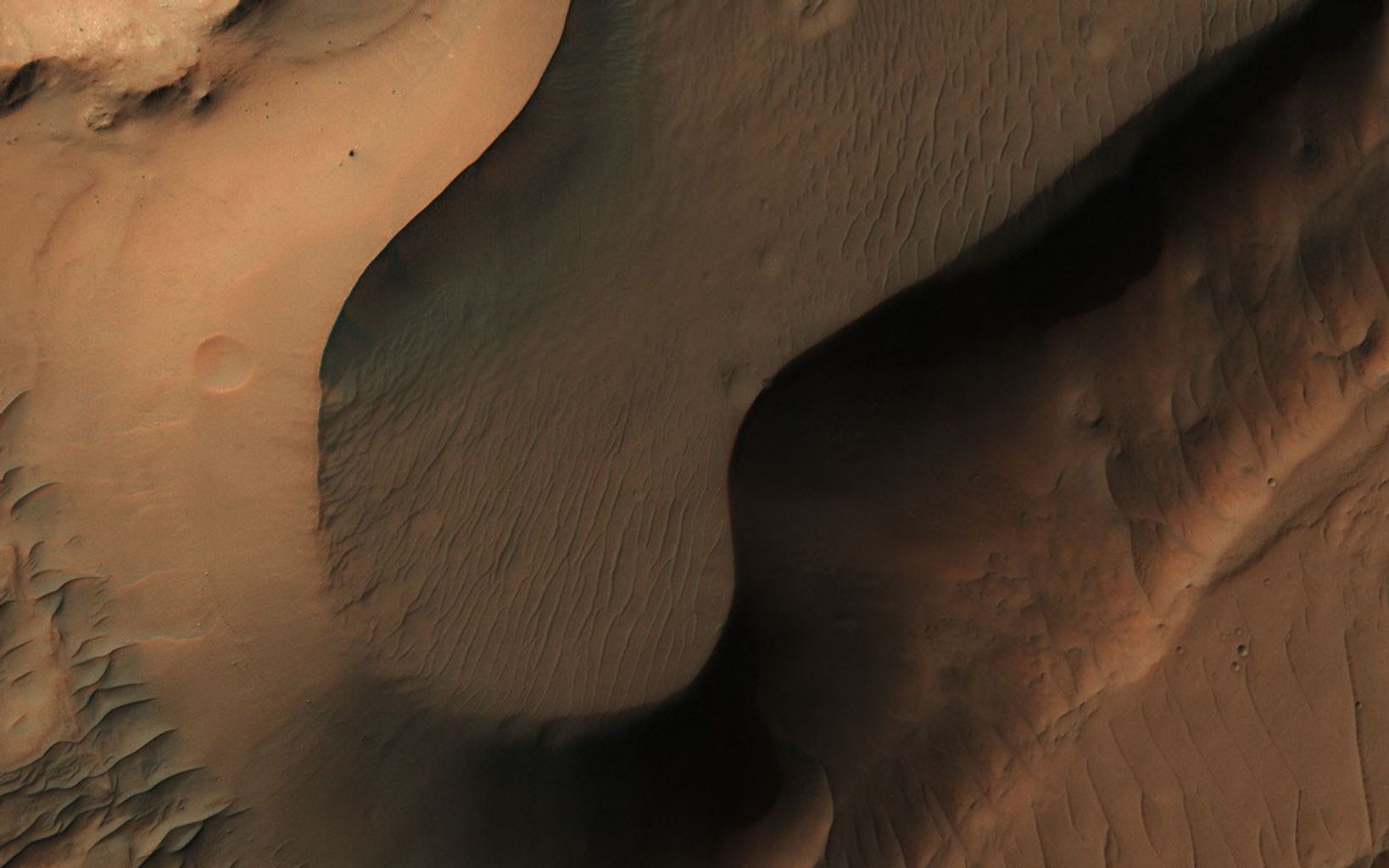Need some fresh perspective? Here are 10 vision-stretching images for your computer desktop or phone wallpaper. These are all real pictures, sent recently by NASA's planetary missions throughout the solar system. You'll find more NASA images at solarsystem.nasa.gov/galleries, images.nasa.gov and www.jpl.nasa.gov/spaceimages. See this previous collection as well.
Applying Wallpaper:
1. Click on the screen resolution you would like to use.
2. Right-click on the image (control-click on a Mac) and select the option 'Set the Background' or 'Set as Wallpaper' (or similar).
1. The Fault in Our Mars
This image from NASA's Mars Reconnaissance Orbiter (MRO) of northern Meridiani Planum shows faults that have disrupted layered deposits. Some of the faults produced a clean break along the layers, displacing and offsetting individual beds.
Desktops: 1280 x 800 | 1600 x 1200 | 1920 x 1200
Mobile: 1440 x 2560 (JPG, 1.76 MB) | 1080 x 1920 (JPG, 1.14 MB) | 750 x 1334 (JPG, 725 KB)
2. Jupiter Blues
NASA's Juno spacecraft captured this image when the spacecraft was only 11,747 miles (18,906 kilometers) from the tops of Jupiter's clouds -- that's roughly as far as the distance between New York City and Perth, Australia. The color-enhanced image, which captures a cloud system in Jupiter's northern hemisphere, was taken on Oct. 24, 2017, when Juno was at a latitude of 57.57 degrees (nearly three-fifths of the way from Jupiter's equator to its north pole) and performing its ninth close flyby of the gas giant planet.
Desktops: 1280 x 800 | 1600 x 1200 | 1920 x 1200
Mobile: 1440 x 2560 (JPG, 2.14 MB) | 1080 x 1920 (JPG, 1.38 MB) | 750 x 1334 (JPG, 869 KB)
3. A Farewell to Saturn
After more than 13 years at Saturn, and with its fate sealed, NASA's Cassini spacecraft bid farewell to the Saturnian system by firing the shutters of its wide-angle camera and capturing this last, full mosaic of Saturn and its rings two days before the spacecraft's dramatic plunge into the planet's atmosphere on Sept. 15, 2017.
Desktops: 1280 x 800 | 1600 x 1200 | 1920 x 1200
Mobile: 1440 x 2560 (JPG, 206 KB) | 1080 x 1920 (JPG, 137 KB) | 750 x 1334 (JPG, 82 KB)
4. All Aglow
Saturn's moon Enceladus drifts before the rings, which glow brightly in the sunlight. Beneath its icy exterior shell, Enceladus hides a global ocean of liquid water. Just visible at the moon's south pole (at bottom here) is the plume of water ice particles and other material that constantly spews from that ocean via fractures in the ice. The bright speck to the right of Enceladus is a distant star. This image was taken in visible light with the Cassini spacecraft narrow-angle camera on Nov. 6, 2011.
Desktops: 1280 x 800 | 1600 x 1200 | 1920 x 1200
Mobile: 1440 x 2560 (JPG, 298 KB) | 1080 x 1920 (JPG, 202 KB) | 750 x 1334 (JPG, 122 KB)
5. Rare Encircling Filament
NASA's Solar Dynamics Observatory came across an oddity that the spacecraft has rarely observed before: a dark filament encircling an active region (Oct. 29-31, 2017). Solar filaments are clouds of charged particles that float above the Sun, tethered to it by magnetic forces. They are usually elongated and uneven strands. Only a handful of times before have we seen one shaped like a circle. (The black area to the left of the brighter active region is a coronal hole, a magnetically open region of the Sun).
Desktops: 1280 x 800 | 1600 x 1200 | 1920 x 1200
Mobile: 1440 x 2560 (JPG, 467 KB) | 1080 x 1920 (JPG, 306 KB) | 750 x 1334 (JPG, 177 KB)
6. Jupiter's Stunning Southern Hemisphere
See Jupiter's southern hemisphere in beautiful detail in this image taken by NASA's Juno spacecraft. The color-enhanced view captures one of the white ovals in the "String of Pearls," one of eight massive rotating storms at 40 degrees south latitude on the gas giant planet. The image was taken on Oct. 24, 2017, as Juno performed its ninth close flyby of Jupiter. At the time the image was taken, the spacecraft was 20,577 miles (33,115 kilometers) from the tops of the clouds of the planet.
Desktops: 1280 x 800 | 1600 x 1200 | 1920 x 1200
Mobile: 1440 x 2560 (JPG, 2.18 MB) | 1080 x 1920 (JPG, 1.39 MB) | 750 x 1334 (JPG, 799 KB)
7. Saturn's Rings: View from Beneath
NASA's Cassini spacecraft obtained this panoramic view of Saturn's rings on Sept. 9, 2017, just minutes after it passed through the ring plane. The view looks upward at the southern face of the rings from a vantage point above Saturn's southern hemisphere.
Desktops: 1280 x 800 | 1600 x 1200 | 1920 x 1200
Mobile: 1440 x 2560 (JPG, 685 KB) | 1080 x 1920 (JPG, 391 KB) | 750 x 1334 (JPG, 729 KB)
8. From Hot to Hottest
This sequence of images from NASA's Solar Dynamics Observatory shows the Sun from its surface to its upper atmosphere all taken at about the same time (Oct. 27, 2017). The first shows the surface of the sun in filtered white light; the other seven images were taken in different wavelengths of extreme ultraviolet light. Note that each wavelength reveals somewhat different features. They are shown in order of temperature, from the first one at about 11,000 degrees Fahrenheit (6,000 degrees Celsius) on the surface, out to about 10 million degrees in the upper atmosphere. Yes, the sun's outer atmosphere is much, much hotter than the surface. Scientists are getting closer to solving the processes that generate this phenomenon.
Desktops: 1280 x 800 | 1600 x 1200 | 1920 x 1200
Mobile: 1440 x 2560 (JPG, 162 KB) | 1080 x 1920 (JPG, 852 KB) | 750 x 1334 (JPG, 474 KB)
9. High Resolution View of Ceres
This orthographic projection shows dwarf planet Ceres as seen by NASA's Dawn spacecraft. The projection is centered on Occator Crater, home to the brightest area on Ceres. Occator is centered at 20 degrees north latitude, 239 degrees east longitude.
Desktops: 1280 x 800 | 1600 x 1200 | 1920 x 1200
Mobile: 1440 x 2560 (JPG, 1.76 MB) | 1080 x 1920 (JPG, 1.15 MB) | 750 x 1334 (JPG, 688 KB)
10. In the Chasm
This image from NASA's Mars Reconnaissance Orbiter shows a small portion of the floor of Coprates Chasma, a large trough within the Valles Marineris system of canyons.
Although the exact sequence of events that formed Coprates Chasma is unknown, the ripples, mesas, and craters visible throughout the terrain point to a complex history involving multiple mechanisms of erosion and deposition. The main trough of Coprates Chasma ranges from 37 miles (60 kilometers) to 62 miles (100 kilometers) in width.
Desktops: 1280 x 800 | 1600 x 1200 | 1920 x 1200
Mobile: 1440 x 2560 (JPG, 2.14 MB) | 1080 x 1920 (JPG, 1.35 MB) | 750 x 1334 (JPG, 783 KB)
















